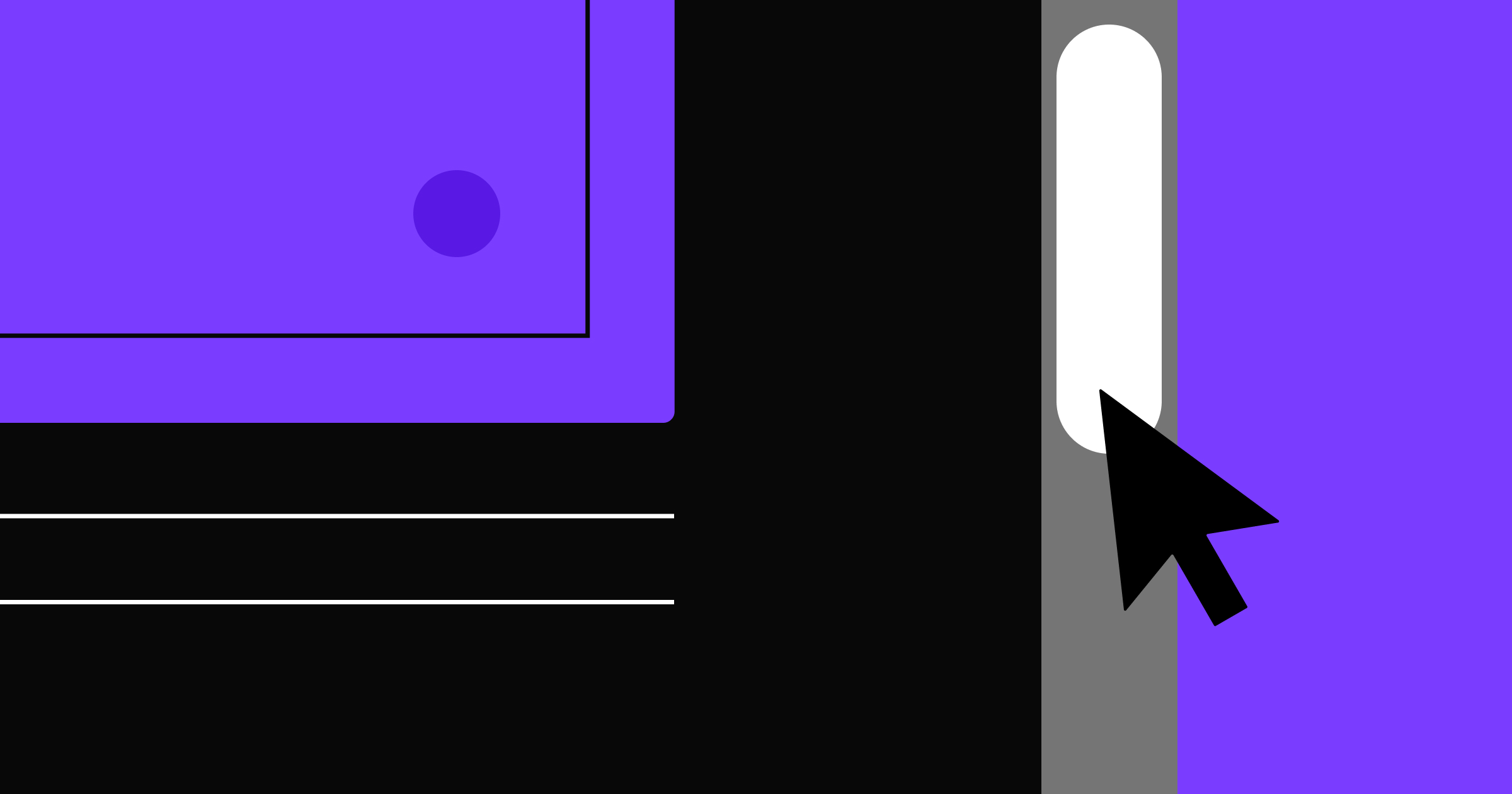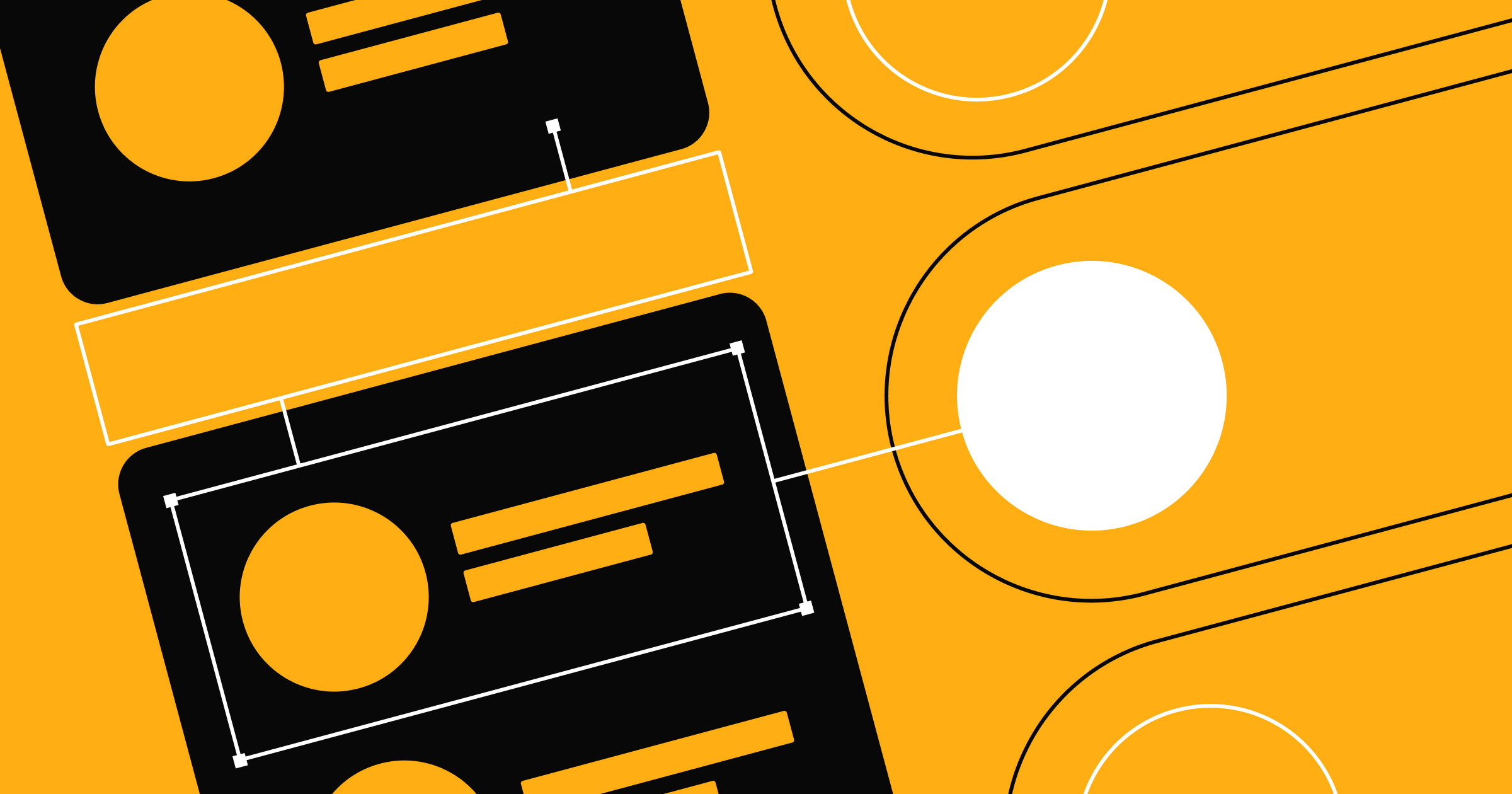Small in form yet mighty in function, microinteractions are the unsung heroes of website design.
Microinteractions are subtle design elements that relay information, provide visual feedback, and improve the user experience (UX). Even though they’re small, they can make websites feel more intuitive and complete.
Say you’re signing up for a new account with a software-as-a-service (SaaS) platform. The site lists several requirements your password has to meet to be secure. Once you hit these criteria, a green checkmark appears next to the text field. With this quick feedback, you’ll know the password is safe and you can continue to the next step.
In this article, we’ll explain more about how microinteractions work in web design and share examples you can incorporate into your projects.
What are microinteractions?
Coined by Dan Saffer, the term “microinteractions” refers to subtle yet impactful design elements that provide sensory feedback during on-page movements. Microinteractions encourage specific actions through animations, motion graphics, and visual cues.
Cues like clicks or hovers typically trigger microinteractions. For example, hovering over a call to action (CTA) button might change its color or display a subtle shadow to show its interactivity.
The primary purpose of these elements is to guide users, deliver feedback, and infuse personality into a design. By making websites more interactive, microinteractions transform ordinary actions into meaningful, memorable experiences.
Microinteractions in web design
Microinteractions improve functionality while making user journeys more enjoyable and intuitive. They work by:
- Guiding visitors — Features like parallax scrolling, progress indicators, and validation messages help users quickly complete tasks. For example, a progress bar on a multi-step form reduces confusion and motivates users to finish. Clear guidance supports customers throughout their journey so they enjoy their browsing experience and reach the end of the intended sales funnel.
- Improving engagement — Interactive elements like animated CTAs and hover effects bring a site’s branding to life. These details make the experience more immersive, keeping users interested and connected to the website’s narrative and purpose.
- Providing feedback — Responses like a subtle vibration after clicking a button or a change in element color tell users their action was successful. This real-time feedback helps close the interaction loop and shows people they can trust the website’s functionality.
- Subtly enhancing the UX — Microinteractions like hover effects, button animations, and progress indicators guide visitors through a website by providing instant feedback and making navigation feel more intuitive.
- Staying on brand — Consistent design elements add personality to your website while providing a cohesive and memorable user journey. Every microinteraction can reflect your brand's personality and tone, reinforcing it within visitors’ minds.
- Supporting functionality — Engaging animations and effects improve the site’s interface without compromising performance. Optimized interactions maintain fast load times and smooth functionality so users browse and leave satisfied, intending to return for more.
7 microinteractions examples in web design
Here are seven examples of website microinteractions that encourage more engagement from visitors.
1. COVILLA’s hover and parallax effects
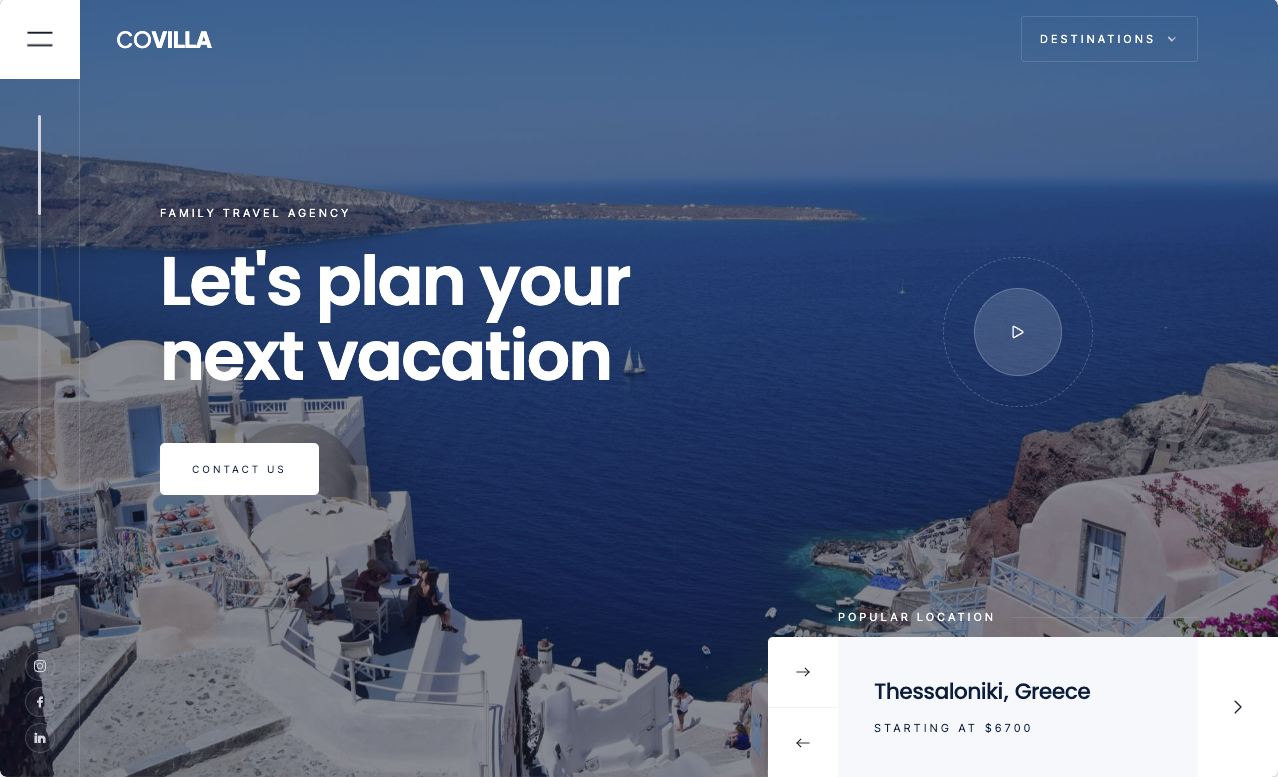
Ty Hughey’s clonable website template, COVILLA, has several microinteractions throughout the landing page that grab attention. Subtle hover effects, smooth transitions, and click-to-reveal animations all make this fictional travel agency’s offering more appealing.
For example, as you hover over a floating play button in the hero image, a video of a couple walking on a beach appears in the background. This microinteraction tells you what’s to come when you click, and more importantly, it shows you what your next vacation could look like if you work with COVILLA.
Similarly, as you scroll through the homepage, parallax effects reveal beautiful images of far-off destinations. While simple, this design creates a clear message: Interacting with COVILLA (and their website) gives you easy access to stunning vacation packages.
2. AppMail’s scrolling effects

AppMail is an AI-powered platform that lets customers purchase products without leaving their email. Joseph Berry designed their website, which features loading animations, swiping gestures, and floating elements that reflect the product's core offering — interactive, hassle-free interfaces.
The site’s design further mirrors its messaging so potential customers better understand the brand’s identity. For instance, one header reads, “Bring an immersive experience to your marketing emails.” To the left of that phrase, a scrolling image carousel cycles through different shopping options customers might see in their emails, such as search filters and discount offers. Not only does this design choice show site visitors what future marketing materials could look like, it also makes the website itself immersive, just like the header suggests.
3. Jomor Design’s hover animations
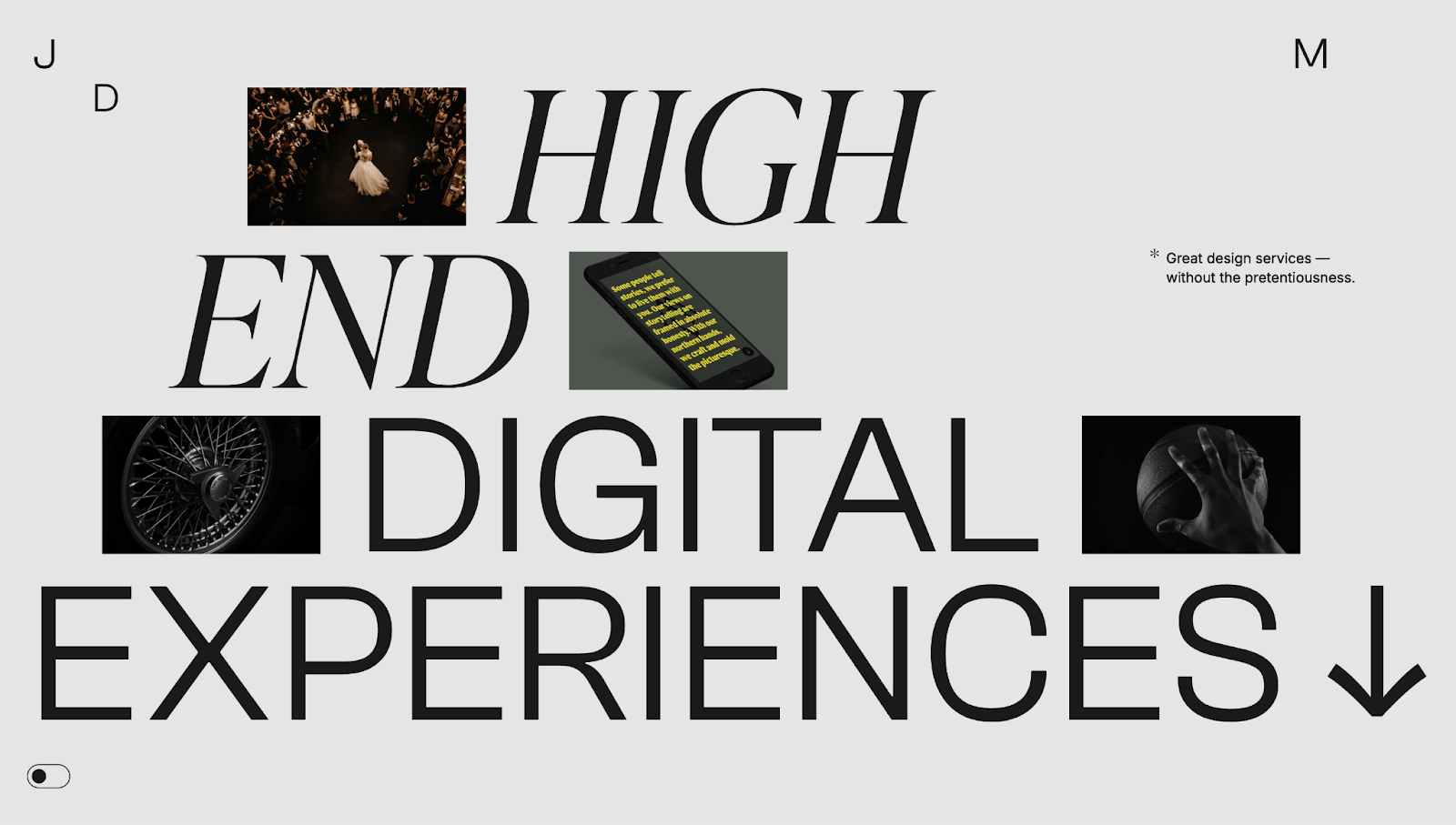
Jonathan Morin (of Jomor Design) built his portfolio website with a range of microinteractions to advertise his skills. Every strong portfolio needs examples of past work to convert potential customers into clients, and Jonathan accomplishes this by using floating thumbnails whose pictures change to show projects. It's a clever way to highlight lots of information without taking up too much screen space.
When you first land on the page, the phrase "High End Digital Experiences" invites you to scroll down. As you do, various elements — text, images, and a video — move with your cursor. If you keep scrolling, the elements expand and stir. If you return, they retract.
Not only is this aesthetically pleasing, but all this movement and change encourages the user to continue interacting with the site, which means they see more and more of Jonathan's work. The goal is that this exposure to his creativity convinces them to get in touch.



















Interactions & animations
Learn how to animate multiple elements and bring your designs to life with rich, sequenced interactions and animations.
4. MinimalGoods’ scrolling animations and transitions

Designer Timothy Ricks created this MinimalGoods conceptual website. Thanks to the site’s bold typography and ample whitespace, it has a modern appearance. And these standard minimalist design principles stand out due to the following microinteractions:
- Section and color transitions improve navigation and readability by creating contrast between product details. Offering this information at a glance allows visitors to take in more of the website quickly, resulting in lower bounce rates and higher retention.
- Floating images provide visual cues for each section, while the asymmetrical, lopsided placement allows for negative spacing so the layout doesn’t overwhelm visitors or seem cluttered. This setup makes the browsing experience more enjoyable, so people are more likely to spend time on the page and seek out additional information about the products.
Overall, these microinteractions grab attention, show each category’s value, and encourage you to explore your area of interest.
5. Glidespeakers’ carousel image slider
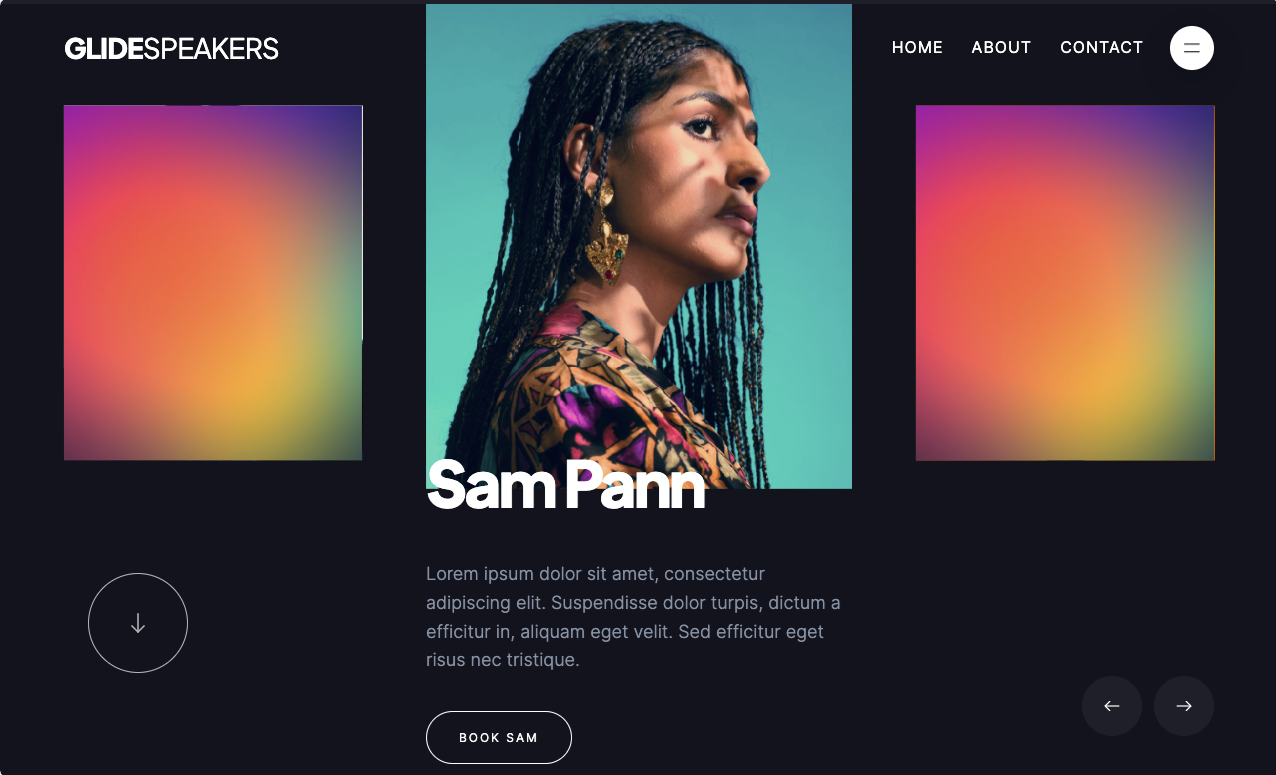
Ty Hughey’s Glidespeakers template is a conceptual page that advertises fictional speakers for hire. The site opens with a carousel describing these imaginary keynotes. As you scroll through the options, the site reveals the speaker’s portrait, name, and description — the rest of the carousel fades behind a rainbow gradient.
This design prevents you from getting overwhelmed with options and instead allows individual bios to shine. In turn, you’ll likely spend more time getting to know each speaker, find one you connect with, and book them.
6. Pitch’s scrolling transitions

Pitch’s concept website, made by Bjorn Encuțescu, opens with a full-screen website header that reads “All hands on deck.” This hints at what’s to come: As you scroll, the hero image shrinks down to become the first slide of a presentation deck. This simple-yet-effective animation informs you about the product while providing a demonstration. If it appeals to you, you’ll likely explore further and potentially sign up for the service.
Bjorn continues to showcase Pitch's messaging by infusing it within the website's design language. Next to a header reading “Formatting that’s effortless,” a cartoon hand snaps as you scroll by, suggesting that using Pitch is a “snap” — simple and quick.
7. Joseph Berry’s splash page and hover effects

Joseph Berry’s award-winning cloneable site features a simple splash page that invites users to explore with a standout yellow “Enter” button. After tapping, the background slides open to reveal a site with multiple microinteractions:
- Floating buttons and icons with hover-activated feedback inform you of your actions so you know where you are on the site. This design makes the user experience less confusing, as you’re guided throughout your journey.
- An animated play button follows the direction of your mouse, encouraging you to watch the course trailer.
- UI card elements appear when you hover over the course modules. They stand out on the screen aesthetically while providing another large CTA to click on to explore each project further.
These modern design elements showcase Joseph’s talents and range as a designer, all of which convince site visitors that his design course is worth purchasing.
Best practices for implementing microinteractions in web design
Effective microinteractions are purposeful in their implementation. Consider these best practices when adding microinteractions to your web and UI/UX design projects.
Microinteractions should:
- Be clear and purposeful — Microinteractions should entertain, guide, and inform site visitors. Each effect should focus on a single task to prevent conflicting design choices from confusing users.
- Make branding cohesive — Define your standard design rules to maintain consistency across your website.
- Encourage engagement and delight end users — While subtlety is crucial, microinteractions can be pleasant little moments that make the user experience more enjoyable. You can use them purely to entertain visitors aesthetically and grab their attention.
- Be usable and accessible — Consider people with disabilities when designing microinteractions — no matter who lands on your website, they should be able to use it. To ensure inclusivity, provide alternative feedback (visual, haptic, and sonar) variations.
- Include well-structured information architecture — Document how each microinteraction connects to the next, and keep things tidy by deleting unused styles. This ensures the experience is cohesive and gives you a reference point when updating the site in the future.
- Don’t overuse microinteractions — While microinteractions offer helpful feedback, overusing them can distract and frustrate visitors. Microinteractions should be subtle, purposeful interactions that improve the experience without overloading the interface or cluttering the design.
Frequently asked questions
What actions typically trigger microinteractions on a website?
Microinteractions are triggered by common user actions like clicks, hovers, scrolls, and form inputs. For example, hovering over a button might subtly change its color or shadow to indicate it’s interactive, while clicking it could trigger a confirmation animation. Scrolling can activate progress bars or parallax effects, and form fields often provide real-time feedback as users type. These small cues enhance usability by making interactions feel responsive and intuitive, turning simple actions into a seamless user experience.
How should I design microinteractions to be accessible and inclusive?
Accessible microinteractions offer feedback in multiple forms — not just color changes, but also text, icons, or motion — to ensure users with different abilities can understand and interact with them. Avoid relying solely on color to indicate changes, and make sure animations respect motion preferences by allowing users to reduce or disable them. Keyboard users should experience the same feedback as mouse users, ensuring consistent interaction across input methods. By designing inclusively from the start, microinteractions can enhance experiences for everyone without leaving anyone behind.
How do I keep microinteractions purposeful without overwhelming users?
The key to effective microinteractions is purposeful restraint — every animation or feedback should serve a clear function, like confirming an action or indicating interactivity. Avoid adding motion just for aesthetics; instead, use subtle transitions that feel natural and support the task at hand. Well-designed microinteractions should feel intuitive and effortless, helping your visitors navigate without distraction. When done right, visitors may not notice them individually, but they’ll feel the difference in the smoothness and clarity of the experience.
Level up your website with microinteractions
Microinteractions are the tiny threads that weave a website's smaller elements into a cohesive layout. By improving usability, guiding users, and adding personality, these micro-design elements create experiences that keep people coming back.
Webflow's visual web design tools let you incorporate microinteractions into your site — without relying on developers. Experiment with drag-and-drop animations, hover effects, and scroll triggers to bring your design to life.
Design and build interactive web experiences with Webflow's visual web experience platform.

Get started for free
Create custom, scalable websites — without writing code. Start building in Webflow.








